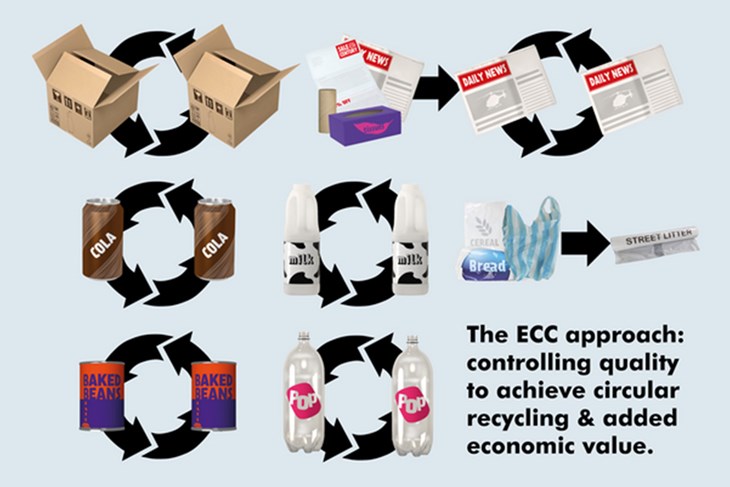In his regular feature, Denis the Dustcart explores how Exeter’s approach to recycling focuses on quality, circularity, and ethical value. It’s not just about reducing waste – it’s about making sure that what we recycle becomes something useful again, and again, and again.
You can follow Denis on his Facebook page to keep up with information about Recycling issues.
Controlling quality.
Pursuing circular solutions.
Adding value ethically.
These are our priorities in our approach to recycling in Exeter.
Controlling quality means educating people to put the right things in their recycling bins, and then sorting those things thoroughly in our own Materials Reclamation Facility.
Pursuing circular solutions means ensuring, wherever possible, that the material we sell will become the same product again. This is achieved through controlling quality and producing bales of single-polymer plastics and equal-quality tins, cans, paper, and corrugated card.
Adding value ethically means finding the most economically worthwhile solutions for the material we sell – including any for which there are no circular options available – while ensuring these remain environmentally and ecologically sustainable.

Well sorted material that enters a circular recycling solution can’t help but have a higher market value. Companies will pay more to save themselves work in getting the quality up to where they need it to be.
Bales of clear PET bottles will be worth more than bales of mixed-colour bottles because they don’t require further separating before being turned back into clear plastic bottles.
Likewise, bales of HDPE milk bottles can head straight to the reprocessor for granulating and recycling into milk bottles without having to go through a third party for sorting.
Thin card can’t be turned into corrugated cardboard, which is better quality and worth more. Thin card is actually classed as paper. That’s why we separate the corrugated stuff and send it to be made into corrugated card again, while sorting cereal boxes, tissue boxes and the like into the paper pile from where they’re sent to be made into quality newsprint.
We get good-quality plastic bags turned into sacks, which we then use across our waste services. Because we sell the material to the company that makes the bags, we end up saving that much over buying new recycled plastic sacks.
Quality is key. Maximising the potential of what people put in their recycling bins to become the same product again – or as high a quality product as possible – should be the whole point of recycling.
If this approach also maximises income for public services, all the better.
Read full article at source
Stay informed about this story by subscribing to our regular Newsletter



